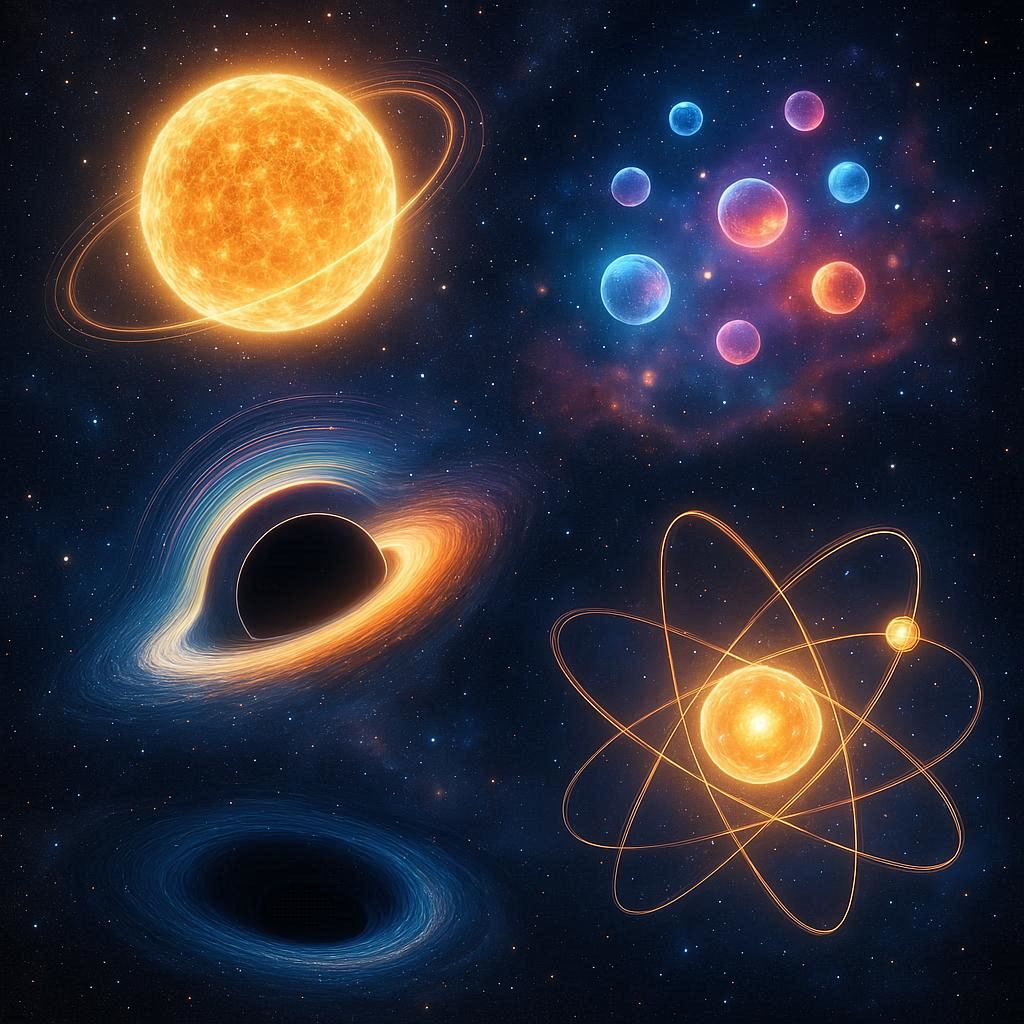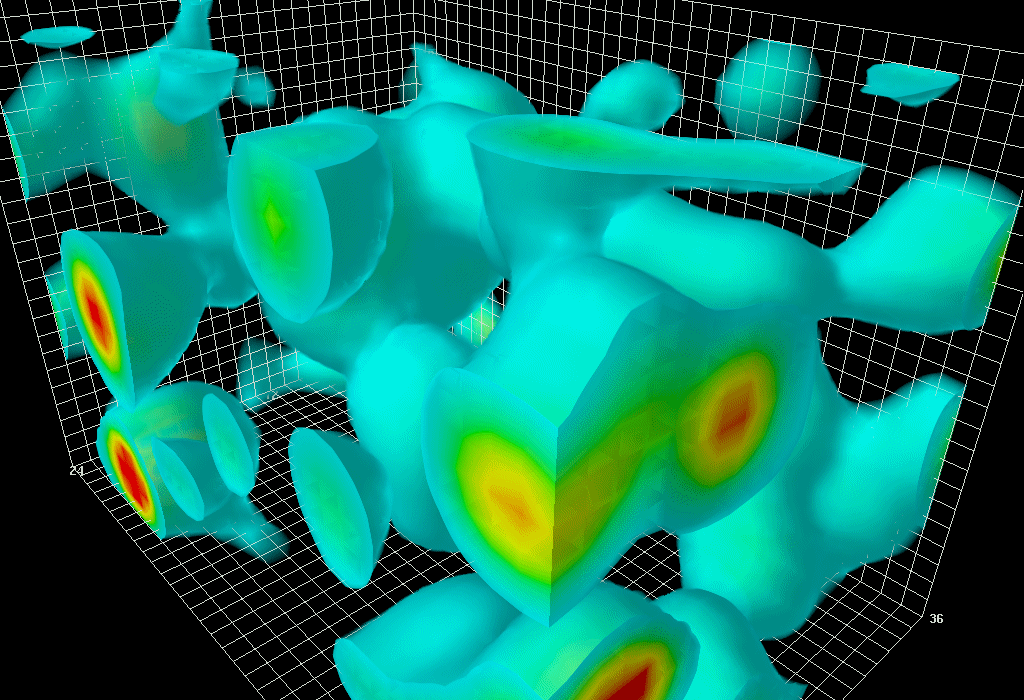Physics is more than equations and laboratory experiments. It is the poetry of the universe, a lens through which we perceive reality in ways that challenge our intuition. From the smallest particles to the vast cosmos, physics reveals astonishing truths that can reshape our understanding of existence itself. Here are fifty mind-blowing physics facts, each offering a window into the profound mysteries of the universe.
1. Time Isn’t Universal
Time is not the same for everyone. According to Einstein’s theory of relativity, time slows down as you approach the speed of light. A clock on a fast-moving spaceship ticks slower than one on Earth. This is not science fiction—it has been experimentally verified using precise atomic clocks on airplanes and satellites.
2. Space Can Bend
Massive objects like stars and planets warp the fabric of space itself. This curvature of space-time causes gravity, making planets orbit stars and light bend around massive objects, a phenomenon confirmed during solar eclipses.
3. The Universe Is Mostly Invisible
Around 85% of the universe is dark matter, invisible and detectable only through its gravitational effects. An additional 70% is dark energy, driving the universe’s accelerating expansion. Ordinary matter, the stuff we see, makes up only about 5% of the cosmos.
4. Light Is Both Particle and Wave
Light behaves as a wave in some experiments and as discrete particles called photons in others. This duality, central to quantum mechanics, defies classical intuition. It means that reality can’t always be described by simple categories.
5. Quantum Particles Can Be in Two Places at Once
Particles like electrons can exist in a superposition, occupying multiple states simultaneously until observed. This principle underlies the famous Schrödinger’s cat thought experiment, where a cat can be simultaneously alive and dead until the box is opened.
6. Empty Space Isn’t Empty
The vacuum of space teems with activity. Virtual particles constantly pop in and out of existence, creating a restless background energy. Even “nothingness” is full of dynamic processes at the quantum level.
7. Entanglement Connects Distant Particles
Quantum entanglement links particles so that the state of one instantly affects the other, no matter the distance separating them. Einstein called this “spooky action at a distance,” and it’s been confirmed in experiments spanning miles.
8. Time Travel Is Theoretically Possible
Einstein’s relativity allows for scenarios in which time can pass differently for different observers. While backward time travel remains speculative, forward travel is already happening: astronauts experience tiny time dilation effects due to their speed and distance from Earth’s gravitational field.
9. The Universe Is Expanding Faster Than Light
Galaxies aren’t moving through space faster than light; space itself expands. This means distant galaxies can recede from us at effective speeds greater than light without violating relativity.
10. Energy and Mass Are Interchangeable
Einstein’s famous equation, E = mc², reveals that mass is simply a concentrated form of energy. This principle powers the sun, nuclear reactors, and atomic bombs, demonstrating the profound equivalence between matter and energy.
11. Black Holes Aren’t Empty
Black holes are regions of space where gravity is so strong that not even light can escape. Far from being voids, they concentrate mass into singularities, points of infinite density where physics as we know it breaks down.
12. Black Holes Can Evaporate
Through Hawking radiation, black holes can slowly lose mass over time, eventually evaporating entirely. This merges quantum mechanics and gravity in ways that challenge our understanding of reality.
13. Neutron Stars Are Ultra-Dense
A neutron star packs the mass of the sun into a sphere just a few kilometers across. A sugar-cube-sized piece of neutron star matter would weigh about a billion tons on Earth.
14. The Speed of Light Is the Universe’s Speed Limit
Nothing with mass can travel faster than light. This limit shapes the structure of space-time and underlies the causality that governs the universe.
15. Quantum Tunneling Lets Particles Break Barriers
Particles can sometimes pass through energy barriers they shouldn’t be able to cross. This phenomenon, quantum tunneling, powers nuclear fusion in stars and the scanning tunneling microscope, an essential tool in nanotechnology.
16. Light Can Be Slowed
In certain media, such as Bose-Einstein condensates, light can be slowed to just a few meters per second. This extreme manipulation of photons challenges our classical intuition of light’s speed.
17. Particles Can Exist as Waves
Electrons, protons, and even atoms display wave-like behavior. This wave-particle duality is the cornerstone of quantum mechanics, showing that reality is fundamentally probabilistic, not deterministic.
18. The Universe Had a Beginning
The Big Bang theory explains that space, time, and matter originated around 13.8 billion years ago. Everything we see today—galaxies, stars, planets—emerged from a singularity, an infinitely dense point.
19. Black Holes Warp Time
Time near a black hole slows dramatically. If you orbited near the event horizon, seconds for you could be years for someone far away. Gravity affects not just space, but the very flow of time.
20. Particles Can Spontaneously Appear and Disappear
Quantum fluctuations allow particles and antiparticles to appear spontaneously in empty space and annihilate each other shortly after. This ephemeral activity hints at a universe far more dynamic than our senses perceive.
21. Atoms Are Mostly Empty Space
Despite their solidity, atoms are 99.9999% empty space. Electrons occupy vast regions around tiny nuclei, meaning that if you removed the empty space, the Earth could fit inside a single atom.
22. Cosmic Rays Shower the Earth
High-energy particles from distant supernovae constantly bombard Earth, passing through us unnoticed. Each square centimeter of your body is hit by cosmic rays thousands of times per second.
23. Quantum Mechanics Defies Classical Logic
Particles can behave in ways that have no classical analogy. They can tunnel, exist in superposition, and remain entangled. Our everyday intuition, shaped by macroscopic experience, is insufficient to fully grasp these behaviors.
24. The Universe Is Symmetrical and Asymmetrical
Physics laws often exhibit symmetry, but subtle asymmetries explain why the universe is made mostly of matter, not antimatter. Without these asymmetries, stars, planets, and life as we know it could never exist.
25. Light Can Be Bent by Gravity
Einstein predicted that massive objects bend light passing nearby. This phenomenon, gravitational lensing, allows us to see distant galaxies behind intervening clusters, essentially turning the cosmos into a natural telescope.
26. Vacuum Energy Could Tear the Universe Apart
Quantum field theory predicts a vast sea of vacuum energy. Some theories suggest this energy could cause a “false vacuum decay,” catastrophically restructuring the universe. While speculative, it highlights the universe’s precarious balance.
27. Sound Can’t Travel in Space
Unlike light, sound requires a medium. The vacuum of space is silent, yet celestial events like supernovae emit electromagnetic waves that can be “heard” when converted to sound by instruments.
28. Magnetism and Electricity Are Linked
Electric currents create magnetic fields, and changing magnetic fields induce electric currents. This elegant relationship is the foundation of electromagnetism, uniting two forces once thought separate.
29. The Universe Is Hierarchical
From quarks to atoms, atoms to molecules, molecules to planets, and planets to galaxies, the universe organizes itself across scales. Each level obeys unique rules, yet all follow universal physical laws.
30. Particles Have Quantum Spin
Elementary particles possess intrinsic angular momentum called spin, which is unrelated to classical spinning but is essential for the structure of atoms and matter. It governs chemistry, magnetism, and much of the microscopic world.
31. Quantum Mechanics Predicts Probabilities
Unlike classical physics, which predicts definite outcomes, quantum mechanics predicts probabilities. This fundamentally reshapes our understanding of cause and effect at the microscopic scale.
32. The Universe Could Be a Hologram
Some theories suggest our three-dimensional universe is a projection of two-dimensional information encoded at its boundaries. This “holographic principle” challenges our perception of space itself.
33. Entropy Governs Time’s Arrow
The second law of thermodynamics states that entropy, or disorder, always increases in an isolated system. This principle explains why time appears to move forward, giving a physical direction to the flow of existence.
34. Particles Can Exist as Virtual States
Virtual particles mediate forces without ever being directly observed. They allow photons to carry electromagnetic forces, gluons to bind quarks, and are essential in explaining fundamental interactions.
35. Light Can Be Polarized
Light waves can oscillate in specific directions, a property called polarization. Polarization underlies technologies from sunglasses to liquid crystal displays, demonstrating practical applications of fundamental physics.
36. Energy Levels Are Quantized
Electrons in atoms occupy discrete energy levels. They cannot exist in between these levels. When electrons jump between levels, they emit or absorb specific quanta of energy, producing the colors we see in spectra.
37. Neutrinos Are Nearly Invisible
Neutrinos are ghostly particles that pass through ordinary matter almost entirely unhindered. Trillions of them pass through your body every second without notice, originating from the sun and cosmic events.
38. Gravity Could Be a Weak Force
Gravity is immensely weaker than electromagnetism, the strong nuclear force, or the weak nuclear force, yet it dominates on cosmic scales due to its infinite range and cumulative effect.
39. Atoms Can Be Split
Nuclear fission splits atoms, releasing tremendous energy. This principle powers nuclear reactors and weapons, demonstrating the latent energy hidden in matter itself.
40. Quantum Fluctuations Shaped the Universe
Minute variations in the early universe were amplified by cosmic inflation, creating galaxies, stars, and planets. The structure of the cosmos emerged from seemingly random quantum fluctuations.
41. Particles Can Behave as Antiparticles
Every particle has a corresponding antiparticle with opposite charge. When particle meets antiparticle, they annihilate into energy. This symmetry hints at deeper underlying principles in the universe.
42. The Casimir Effect Is Real
Two uncharged plates placed very close in a vacuum experience an attractive force due to quantum fluctuations. This subtle phenomenon confirms that “empty space” is never truly empty.
43. The Universe Has a Cosmic Microwave Background
The faint afterglow of the Big Bang permeates all space. This microwave radiation, discovered in 1965, provides a snapshot of the infant universe, confirming cosmological theories and helping map its evolution.
44. Particles Can Tunnel Out of Black Holes
Hawking radiation occurs because quantum effects near a black hole allow particle-antiparticle pairs to form, with one escaping as radiation. This means black holes are not entirely black—they slowly leak energy.
45. Light Has Momentum
Photons carry momentum even though they have no mass. This momentum can exert pressure, known as radiation pressure, affecting comet tails and enabling concepts like solar sails for space propulsion.
46. Quantum Uncertainty Is Fundamental
Heisenberg’s uncertainty principle states that certain properties, like position and momentum, cannot both be known exactly. This is not a limitation of measurement, but a fundamental aspect of reality.
47. Some Forces Are Unifying
Electromagnetism and the weak nuclear force unify under high-energy conditions. Physicists seek a grand unified theory that would encompass all forces, revealing a deeper simplicity in nature.
48. Superconductivity Defies Resistance
At very low temperatures, some materials conduct electricity with zero resistance. Electrons move without energy loss, enabling powerful magnets, quantum computers, and revolutionary technologies.
49. The Universe May Have Extra Dimensions
String theory suggests that beyond the three spatial dimensions we perceive, additional dimensions exist, compactified at scales too small to see. These dimensions could explain fundamental forces and particles.
50. Reality Is Strangely Probabilistic
At its core, the universe does not operate with deterministic certainty. Quantum mechanics reveals that probability and potentiality govern the behavior of matter and energy, challenging our deepest intuitions about reality.
Physics teaches that reality is far stranger and more beautiful than our everyday perceptions suggest. From the tiniest quark to the vast reaches of the cosmos, the universe operates on principles that can be simultaneously elegant and mind-bending. Each fact above is a doorway, inviting us to marvel at the complexity, subtlety, and wonder of existence itself.






